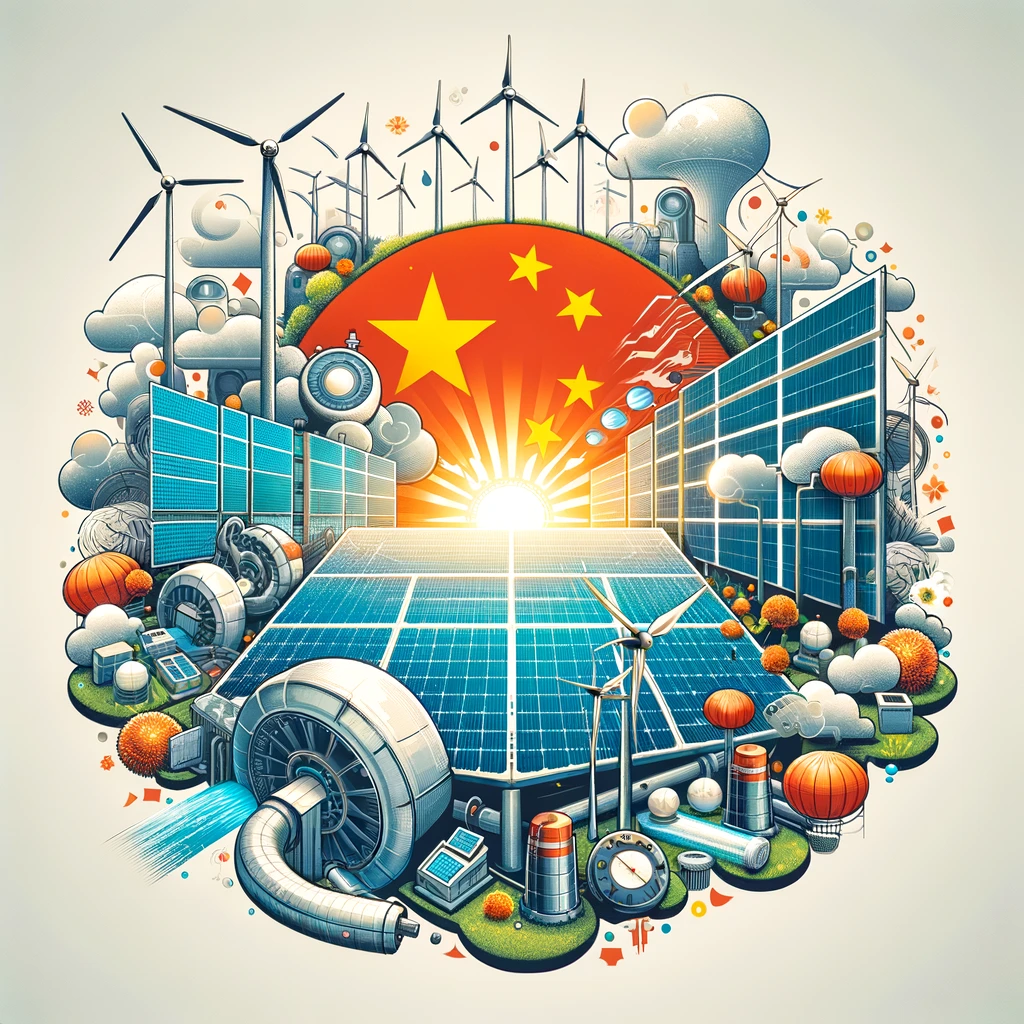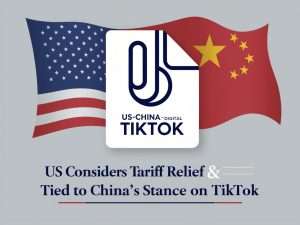Introduction: Understanding China’s 2024 Import Market
Why is China’s import market in 2024 a game-changer for global trade? As the world’s second-largest economy, China’s import patterns offer crucial insights into global economic trends and consumer behaviors. In 2024, we are witnessing a significant shift in the Chinese import landscape, characterized by a growing demand for high-tech electronics, renewable energy equipment, and luxury consumer goods.
This shift isn’t just about numbers; it’s about understanding the evolving needs of the Chinese consumer and the country’s strategic economic directions. For instance, China’s increasing focus on sustainable development is driving demand for renewable energy imports, while the rise in disposable income is fueling the appetite for luxury goods.
In this article, we delve deep into China’s 2024 Import Market, exploring the top five products that are making waves. We’ll look at what’s driving their demand, how these trends compare with previous years, and what they mean for businesses looking to capitalize on these opportunities.
High-Tech Electronics in China: Market Surge and Consumer Demand

How are high-tech electronics redefining China’s import narrative in 2024? The surge in demand for high-tech electronics in China is not just a trend; it’s a testament to the country’s burgeoning appetite for innovation and technology. With a market value estimated to be in the billions, high-tech gadgets like advanced smartphones, gaming devices, and smart home appliances are topping the import charts.
One key driver of this trend is China’s tech-savvy youth population, which is increasingly looking for cutting-edge technology and gadgets. Additionally, the government’s push for technological advancement has led to a favorable environment for importing high-tech electronics.
A case in point is the import of advanced computer components. Despite having a strong domestic production, the demand for specialized chips and high-performance processors from overseas has seen a steep rise. This is fueled by the growing needs of China’s gaming industry and its booming IT sector.
The consumer demand in this segment is not just about functionality; it’s about a lifestyle choice. Brands that understand this narrative and align their marketing strategies accordingly are the ones likely to thrive in this competitive market.
Renewable Energy Imports in China: A 2024 Market Insight

What’s fueling the explosive growth of renewable energy imports in China? In 2024, China’s commitment to sustainable development has dramatically accelerated the demand for renewable energy imports. This surge is primarily driven by the country’s ambitious environmental goals, which include reducing carbon emissions and investing in clean energy sources.
China’s import of solar panels and wind turbines has seen a remarkable increase, with projections indicating a continuous upward trend. A notable example is the import of advanced solar panels, which have seen a year-on-year growth of 20% since 2022. This growth is not just a response to government policies; it’s a reflection of the Chinese public’s increasing awareness and support for eco-friendly energy solutions.
The market insight for renewable energy in China is clear: there’s a vast, untapped potential for companies specializing in green technology. As China moves towards a greener future, the demand for innovative and efficient renewable energy sources is expected to skyrocket, presenting significant opportunities for global exporters.
Luxury Consumer Goods: China’s Growing Market for Imported Luxury

Why are luxury consumer goods becoming a staple in China’s import list? The year 2024 marks a pivotal shift in China’s market dynamics, with a growing demand for imported luxury goods. This trend is powered by the rising affluence of China’s middle class and their evolving taste for premium, high-quality products.
From designer clothing to luxury watches, China’s appetite for high-end goods has expanded beyond traditional luxury items. For instance, the import of luxury cars has increased by 15% in the past year, reflecting the growing preference for status and brand value over mere functionality.
The keyword here is “aspirational lifestyle”. Chinese consumers are increasingly associating luxury goods with personal success and social status. Brands that understand this cultural shift and tailor their products and marketing strategies to meet these aspirations are seeing a significant uptick in their market share.
Understanding the nuances of China’s growing market for imported luxury is crucial for businesses aiming to penetrate this lucrative segment. The key to success lies in recognizing the unique preferences and values of Chinese consumers, which are rapidly reshaping the landscape of the luxury goods market in 2024.
Pharmaceutical Imports in China: Healthcare Trends and Market Demand

How are pharmaceutical imports revolutionizing China’s healthcare sector in 2024? The pharmaceutical industry in China is undergoing a transformative phase, with an increasing reliance on imported medications and healthcare technologies. This shift is not just a business trend but a reflection of China’s commitment to improving public health and accessing global medical advancements.
The demand for pharmaceutical imports has seen a substantial rise, particularly in the areas of specialized medications and advanced treatment technologies. For instance, the import of cancer treatment drugs has grown by 30% in the last two years, highlighting China’s urgent need to address critical health issues with global solutions.
This surge is partly due to China’s aging population and the growing prevalence of lifestyle diseases. The market demand for quality healthcare services and products is at an all-time high, presenting a lucrative opportunity for international pharmaceutical companies. Companies that can navigate the regulatory landscape and cater to the specific needs of the Chinese market are set to make significant inroads.
Automotive Components: Navigating China’s 2024 Auto Import Market

What’s driving the surge in automotive component imports in China’s 2024 auto market? The Chinese automotive industry, renowned for its rapid growth and vast consumer base, is increasingly turning towards imported automotive components to meet its evolving needs. This trend is a clear indicator of China’s pursuit of higher quality standards and cutting-edge automotive technology.
The import market for automotive components has been particularly robust in areas like electric vehicle (EV) parts and advanced automotive technologies. The growth in this sector is aligned with China’s push towards electric vehicles as part of its environmental initiatives. For example, the import of EV batteries has seen a significant increase, driven by the country’s ambitious goals to reduce carbon emissions.
Foreign companies specializing in high-quality automotive components are finding a welcoming market in China. However, succeeding in this market requires an in-depth understanding of China’s auto import policies and consumer preferences. Companies that can align their offerings with China’s strategic goals in the automotive sector are likely to find a receptive and rapidly expanding market.
Analyzing Market Drivers: The Forces Shaping China’s Import Trends in 2024

What are the key forces driving China’s import trends in 2024? To understand the dynamics of China’s import market in 2024, we must delve into the various market drivers that are shaping these trends. These drivers are a complex mix of economic policies, technological advancements, and evolving consumer preferences.
One of the primary market drivers is China’s economic policy shift towards sustainable growth. This policy change is significantly influencing the import of green technologies and renewable energy equipment. For instance, the push for solar energy has led to a substantial increase in the import of high-efficiency solar panels.
Another crucial factor is the rapid technological advancement in China. The nation’s growing demand for high-tech electronics is fueled by its ambition to be a global leader in technology. This ambition has led to increased imports of cutting-edge electronics, including advanced semiconductors and AI-enabled devices.
Lastly, the evolving consumer preferences, especially among the younger demographic, are reshaping the import market. There’s a notable increase in demand for imported luxury goods and foreign pharmaceuticals, driven by a growing middle class and heightened health awareness.
China’s Import Evolution: A Comparative Analysis with Previous Years

How does China’s 2024 import market compare with previous years? Conducting a comparative analysis of China’s import evolution over the years offers valuable insights into how the country’s economic and trade policies have adapted to global changes.
In the past decade, there has been a remarkable shift from importing primarily raw materials to a more diversified import structure. For example, while the import of crude oil and iron ore remains significant, there has been a substantial increase in the import of high-value goods like advanced electronics and pharmaceuticals.
Another significant change is in the luxury goods market. In earlier years, the demand for imported luxury goods was limited to the upper echelons of society. However, as of 2024, this demand has become more widespread, signifying the growth of China’s affluent middle class.
Moreover, comparing the trade figures, there’s a noticeable increase in the volume of automotive components and renewable energy imports. This shift aligns with China’s strategic goals of becoming a leader in renewable energy and electric vehicles.
Strategic Business Insights: Capitalizing on China’s 2024 Import Trends

How can businesses effectively capitalize on China’s 2024 import trends? Understanding and leveraging the strategic business insights of China’s current import market is crucial for businesses looking to penetrate this vast and evolving landscape. In 2024, several key areas offer promising opportunities for both local and international businesses.
Firstly, the rise in demand for high-tech electronics and advanced automotive components opens up avenues for companies specializing in these sectors. For example, businesses that can supply cutting-edge EV technology or AI-integrated devices are likely to find a receptive market in China.
Secondly, the shift towards sustainable and renewable energy sources presents opportunities for companies in the green technology sector. Partnerships with Chinese firms for the supply of solar panels or wind turbines can be particularly lucrative, given the country’s commitment to environmental sustainability.
Lastly, the increasing demand for luxury consumer goods and imported pharmaceuticals indicates a significant market potential for brands in these niches. Tailoring products and marketing strategies to align with the preferences of China’s affluent middle class can be a key strategy for success.
Conclusion: The Future of China’s Import Market and Emerging Opportunities
What does the future hold for China’s import market, and what are the emerging opportunities? Looking ahead, the future of China’s import market appears to be one of continued growth and diversification. The trends observed in 2024 are just the tip of the iceberg, with several emerging opportunities on the horizon.
One key area of future growth is the digital technology sector, especially with China’s ongoing investment in 5G and AI technologies. This could lead to an increased demand for high-tech components and software solutions from global markets.
Additionally, as China continues to focus on healthcare improvement, there will likely be an ongoing need for advanced pharmaceuticals and medical equipment. This trend provides a sustained opportunity for international healthcare companies.
Lastly, with the growing global emphasis on sustainability, China’s demand for eco-friendly products and technologies is expected to rise even further. This shift offers a window for innovation and collaboration in green technology and sustainable practices.
In conclusion, staying abreast of these evolving trends and aligning business strategies accordingly will be key for companies looking to thrive in China’s dynamic import market.
Frequently Asked Questions
What impact do China's trade policies have on its 2024 imports? China's trade policies in 2024 continue to play a pivotal role in shaping the country's import landscape. The government's focus on sustainable development and technological advancement has led to preferential policies for importing green technology and advanced electronics. For instance, reduced tariffs and streamlined customs procedures for renewable energy equipment have significantly boosted their imports. However, stringent regulations and quality control measures for pharmaceuticals and food products remain in place, ensuring that only high-quality products enter the Chinese market. Understanding these policy nuances is crucial for businesses looking to export to China, as compliance is key to successful market entry.
What challenges do foreign companies face when entering China's market in 2024? Foreign companies venturing into China in 2024 encounter a range of challenges, primary among them being navigating regulatory complexities and understanding local consumer preferences. Despite the opening of markets, foreign entities must comply with a myriad of local laws and regulations, which can be daunting. Additionally, the competition in China is fierce, with local companies often having a better grasp of the consumer market. To succeed, foreign companies need to localize their offerings and adapt their business strategies to resonate with Chinese consumers' tastes and preferences.
How do consumer preferences in China differ from those in other international markets? In 2024, Chinese consumer preferences continue to evolve, showing distinct characteristics compared to other markets. There's a growing demand for high-quality, innovative products, reflecting a shift towards premiumization. Chinese consumers are increasingly health-conscious and environmentally aware, favoring sustainable and eco-friendly products. Moreover, digital engagement and online shopping are more pronounced in China than in many other countries. Brands that can leverage digital marketing and e-commerce platforms effectively are more likely to engage with the Chinese audience successfully.
How is technology influencing China's import trends in 2024? Technology plays a central role in shaping China's import trends in 2024. The country's push for technological supremacy is evident in its significant imports of high-tech components and advanced electronics. The integration of AI and IoT in various industries has also spurred the import of related technologies. China's commitment to becoming a leader in electric vehicles has led to increased imports of EV components, especially batteries and advanced motor technologies. This technological drive is not only transforming China's import patterns but also positioning the country at the forefront of global tech innovation.
What emerging products are likely to dominate China's import market beyond 2024? Looking beyond 2024, several emerging products are poised to gain prominence in China's import market. Biotechnological products and advanced medical devices are expected to see increased demand, driven by China's focus on healthcare innovation. Additionally, as China continues its journey towards digitalization, imports related to cybersecurity and cloud computing technologies are likely to rise. Moreover, with the ongoing trend towards sustainability, imports of alternative energy sources like hydrogen fuel cells may also see significant growth.













